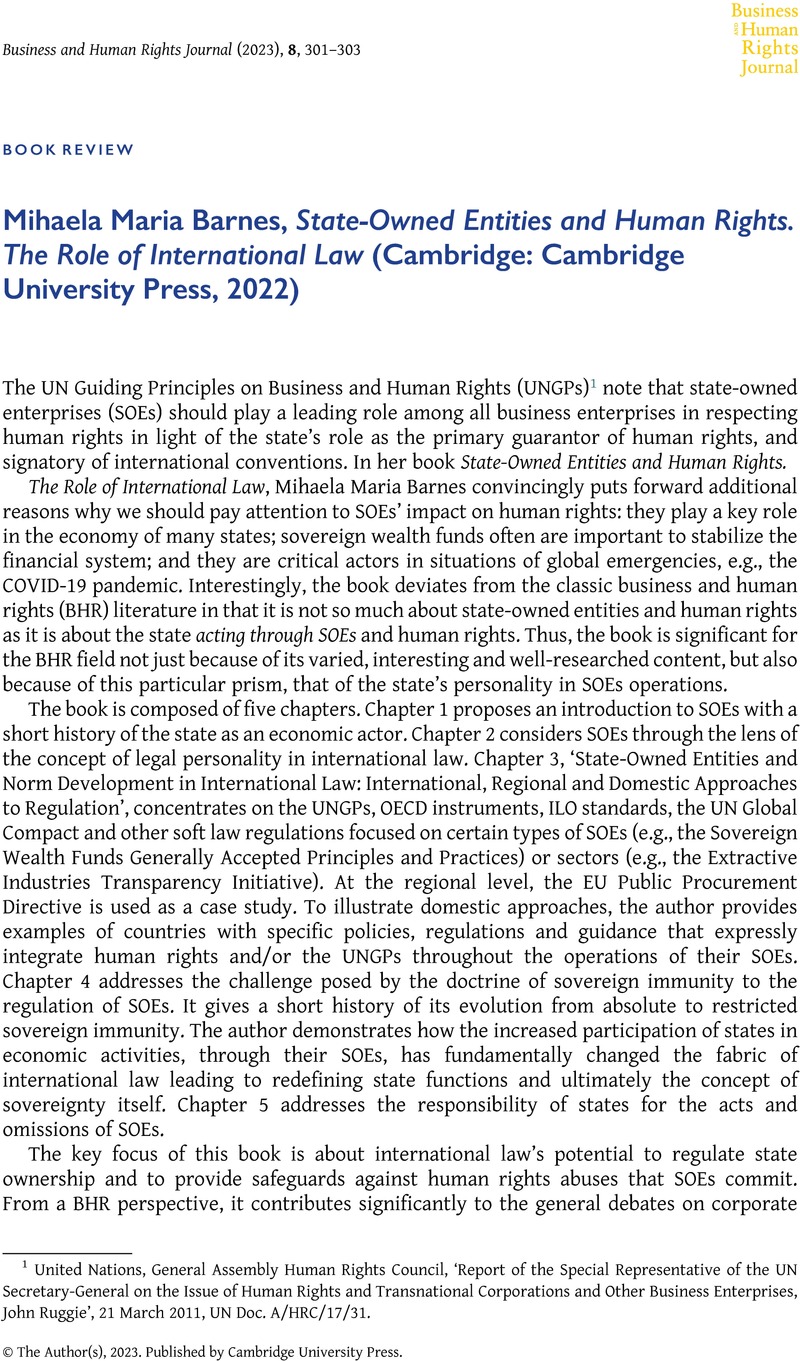No CrossRef data available.
Published online by Cambridge University Press: 10 July 2023

1 United Nations, General Assembly Human Rights Council, ‘Report of the Special Representative of the UN Secretary-General on the Issue of Human Rights and Transnational Corporations and Other Business Enterprises, John Ruggie’, 21 March 2011, UN Doc. A/HRC/17/31.
2 For example, see ECtHR, Lisyanskiy v Ukraine, no. 17899/02, 4 April 2006, ECtHR, Liseytseva and Maslov v. Russia, nos. 9483/05 and 40527/10, § 187, 9 October 2014, ECtHR, Jovičić and Others v. Serbia, nos. 37270/11 and 7 others, § 36, 13 January 2015 and others.